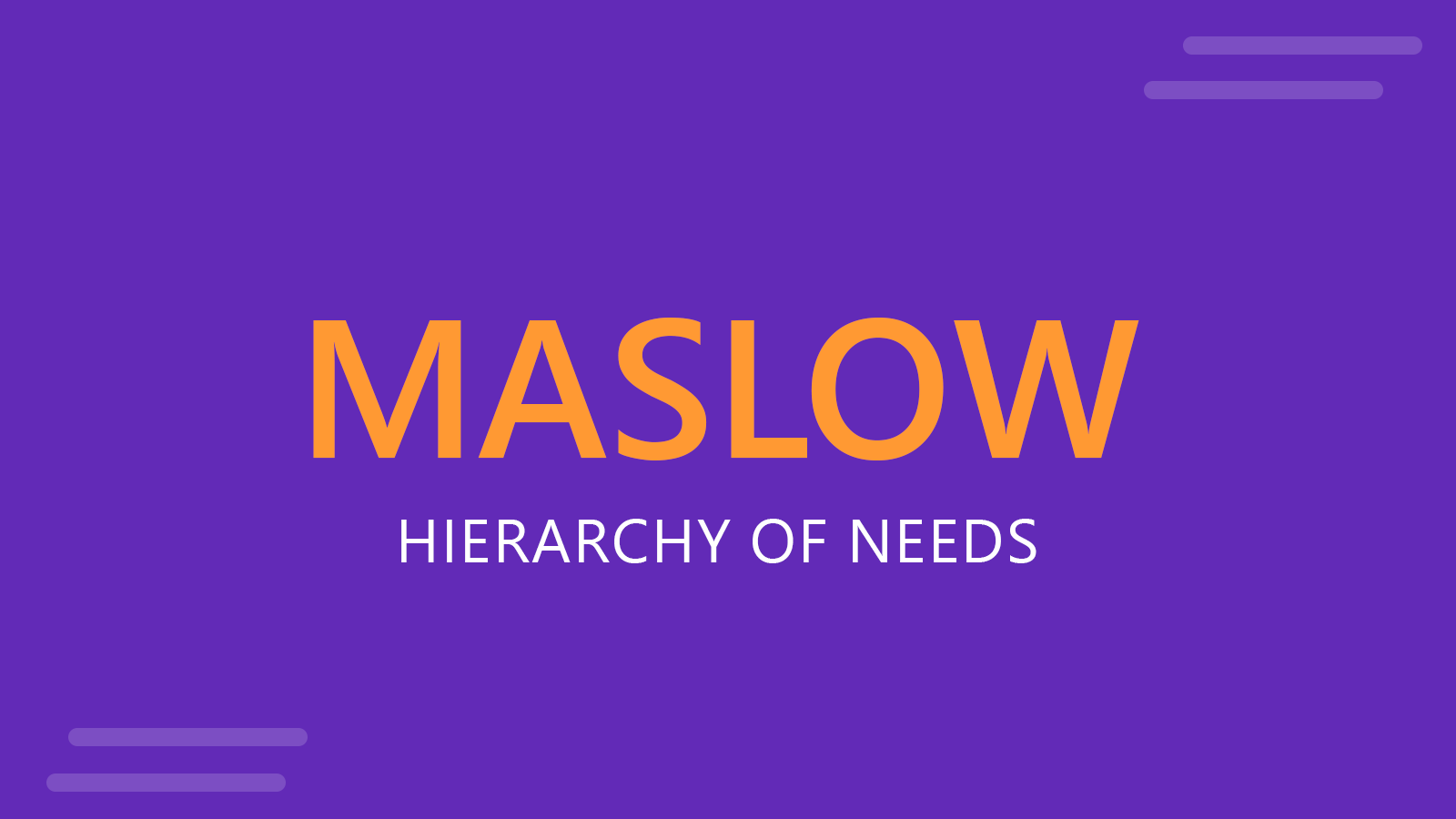Maslow’s Hierarchy of Needs: A Quick Guide
Last updated on February 16th, 2024

Among the many theories aimed at explaining human motivation and behavior, Maslow’s hierarchy of needs stands out as one of the most widely discussed theories.
What is Maslow’s Hierarchy of Needs?
Developed by American psychologist Abraham Maslow in 1943, Maslow’s hierarchy of needs is a theory that lists human needs in priority based on various factors including physiological needs, safety needs, the need for having a sense of belonging and feeling loved, esteem, cognitive needs, aesthetic needs, self-actualization, and transcendence needs.
Maslow developed his theory after studying what he called ‘exemplary people’, including Albert Einstein, Baruch Spinoza, Eleanor Roosevelt, and Jane Addams. Maslow did not study individuals with mental health issues as he believed it would lead to a crippled philosophy.
Key Components of Maslow’s Pyramid
Maslow’s hierarchy of needs pyramid prioritizes human needs in stages, which is often represented in the form of a pyramid, with the most basic needs placed at the bottom. As the pyramid moves upwards, the needs become less basic, until the top of the pyramid is reached where self-actualization, followed by transcendence is placed at the very top.
1. Physiological Needs
Maslow places physiological needs at the very basic level, represented at the bottom of the pyramid. Physiological needs include basic things required for a human being to survive and basic cravings, such as air, water, food, heating, clothes, shelter, sleep, as well as needs like reproduction.
2. Safety Needs
Once physiological needs have been satisfied, an individual according to Maslow will have safety needs that will take precedence. People require a sense of safety; therefore, they try to earn money, build resources and protect themselves from harm. Health, along with personal security, emotional security, and financial security are safety needs that consist of the second stage of Maslow’s hierarchy of needs.
3. Love and Social Needs
According to Maslow, once physiological and safety needs are met, we seek love and a sense of belonging. Desiring to be close to family and friends, belong to a society or group of people. However, being a part of a group means one begins to crave being different, which leads to the next stage in Maslow’s hierarchy of needs.
4. Esteem Needs
At the fourth stage, people crave esteem, respect, and look for self-confidence. At this stage one would want to differentiate one’s self by buying certain products to shape their persona or to do something creative such as writing or taking part in other activities where they can reflect and harness their talent, be it sports, arts, or science. The sense to compete is the highest at this stage according to Maslow.
5. Self-Actualization Needs
In order to reach the fifth stage, i.e. Self-actualization, one needs to first accomplish the first four stages. Once reached, the fifth stage is the place where an individual can relax, be creative, engage in critical thinking objectively, and aim to do something special such as giving back to society through charity or to consider looking after their other needs such as being a good parent, improving their talents and abilities, and pursuing higher goals in life than the ones in the first four stages.
6. Transcendence Needs
The top of the triangle was later divided into self-actualization and self-transcendence by Maslow. Adding an additional level. Transcendence needs include spiritual needs. Fulfilling these needs can lead to a sense of integrity and reaching a holistic level of consciousness, considering not only one’s self but also the world at large and even the cosmos.
How is Maslow’s Hierarchy of Needs Still Valid in 2024
Understanding Human Nature
Despite some criticism, Maslow’s hierarchy of needs still stands out as one of the most widely discussed theories used for understanding human nature and transcendence.
Universal Nature of Theory
Maslow’s hierarchy of needs covers universal aspects of human needs, making it adjustable for different cultures to adapt and understand human motivations and behaviors.
Personal Growth
The theory is widely used by people for personal growth and self-improvement. People use Maslow’s pyramid to determine which stage has been duly fulfilled and what gaps lie in their lives to reach the top of the pyramid.
Workplace Relevance
Managers use Maslow’s hierarchy of needs for training their teams and motivating them to excel. By understanding Maslow’s hierarchy of needs not only can teams find ways to understand what drives them and try to excel in their work, but managers can also determine how to best motivate teams and guide subordinates towards a higher goal. If you need to present this theory in a PowerPoint presentation, see our post about how to create Maslow’s pyramid of needs in PowerPoint using SmartArt.
Maslow’s Hierarchy of Needs PowerPoint Templates
Below are a few suggested hierarchy of needs templates for presenting Maslow’s hierarchy of needs for different types of audience.
1. Maslow Pyramid PowerPoint Template
This PowerPoint template covers Maslow’s pyramid in the form of multiple slides, beginning with a slide representing the whole pyramid, followed by one slide for each stage of the pyramid.

2. Maslow’s Hierarchy of Employee Engagement PowerPoint Template
This template is meant for creating presentations related to Maslow’s hierarchy of needs for employee engagement related presentations. The template contains a slide with each stage highlighted with a different color, followed by one slide dedicated to each stage, highlighting the potential level of employee engagement at the respective level.

Alternatively, if you prefer to build up your own pyramid, you can use SmartArt graphics or pyramid templates to create a visually appealing graphic. We recommend checkout out our article How to Make a Maslow’s Pyramid of Need PowerPoint presentation using SmartArt graphics.
Final Words
Even after eight decades since it was first introduced by Maslow, his theory still has a wide range of applications including in personal life, academic institutions, the corporate world, and society by and large.
